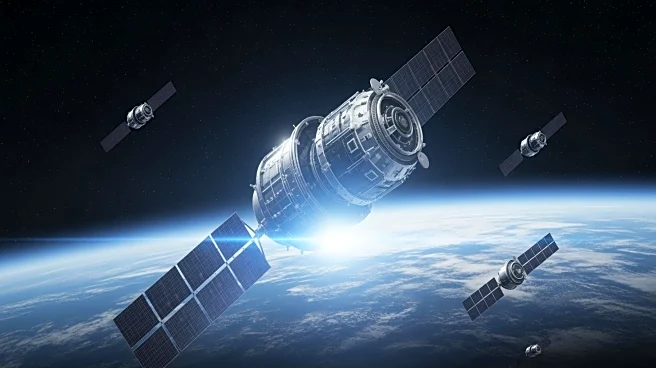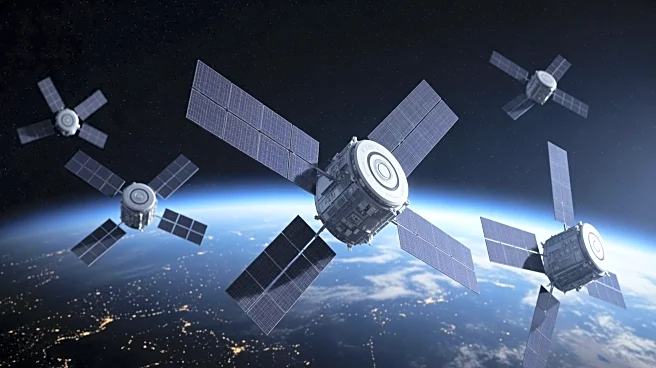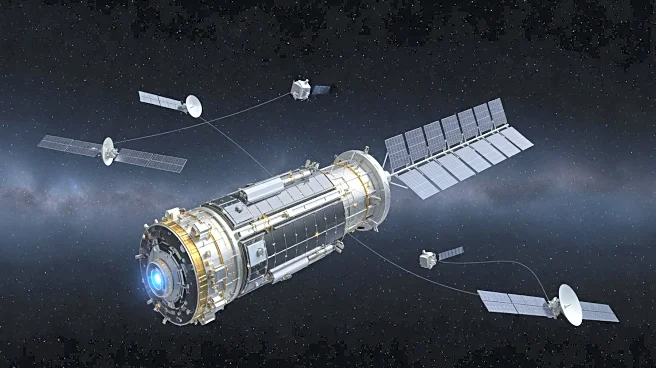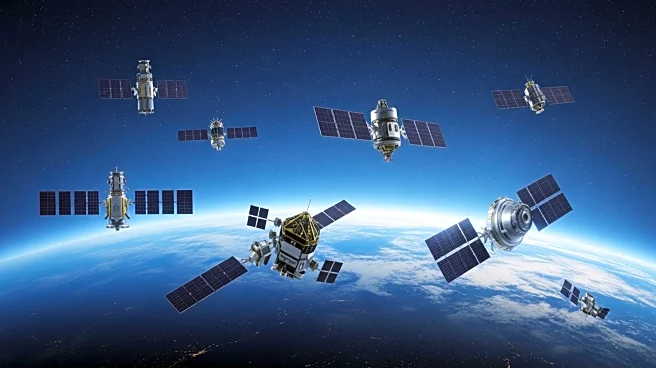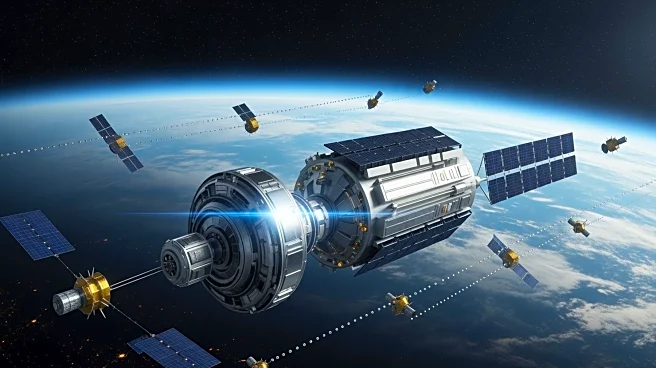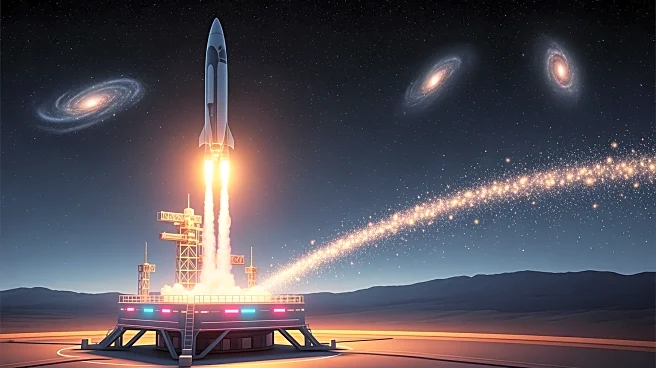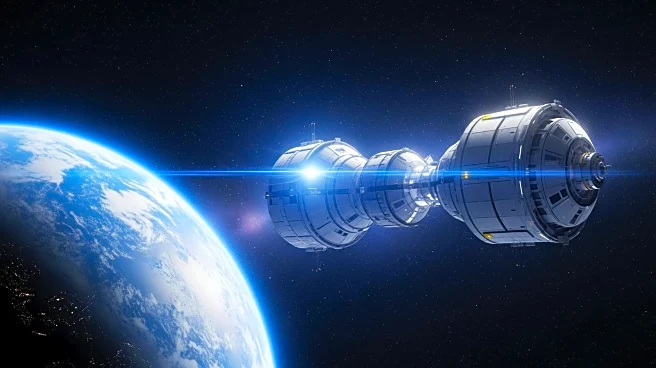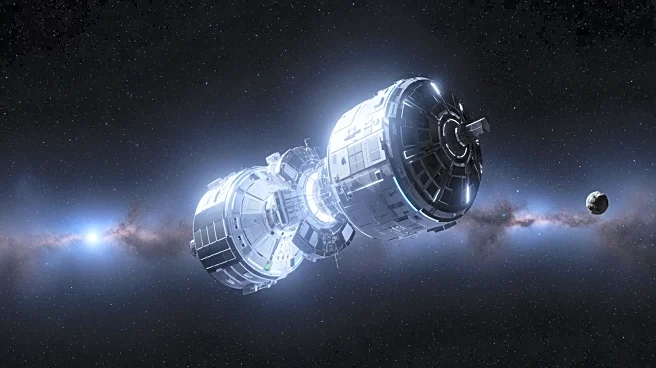What's Happening?
SpaceX launched a Falcon 9 rocket from Vandenberg Space Force Base, carrying 28 Starlink satellites into low-Earth orbit. The launch occurred on November 6, 2025, at 1:14 p.m. PST from Space Launch Complex
4 East. This mission marks the eighth flight for the first stage booster used, which will land on the 'Of Course I Still Love You' droneship stationed in the Pacific Ocean. The launch is part of SpaceX's ongoing efforts to expand its Starlink satellite network, aimed at providing global broadband internet coverage. A live webcast of the launch was available, allowing viewers to witness the event in real-time.
Why It's Important?
The deployment of additional Starlink satellites is crucial for enhancing internet connectivity worldwide, particularly in areas lacking traditional infrastructure. SpaceX's ability to reuse rocket boosters significantly reduces costs and increases launch frequency, positioning the company as a leader in the satellite internet industry. The expansion of the Starlink network is expected to drive competition in the telecommunications sector, potentially leading to improved services and lower prices for consumers. Moreover, the successful landing of the booster demonstrates advancements in reusable rocket technology, which is vital for sustainable space operations and reducing environmental impact.
What's Next?
SpaceX is likely to continue its rapid launch schedule to further expand the Starlink constellation. Future missions will focus on increasing satellite density to enhance service quality and coverage. As the network grows, SpaceX may face challenges related to space traffic management and collision avoidance, necessitating improvements in space domain awareness systems. The company is also expected to seek regulatory approvals and partnerships to expand Starlink services globally, influencing international telecommunications policies.
Beyond the Headlines
The increasing number of satellites in orbit raises concerns about space debris and the sustainability of satellite operations. Regulatory bodies may need to implement stricter guidelines to ensure safe and responsible use of space. Additionally, the proliferation of satellites could impact astronomical observations, prompting discussions on balancing technological advancement with scientific research.


